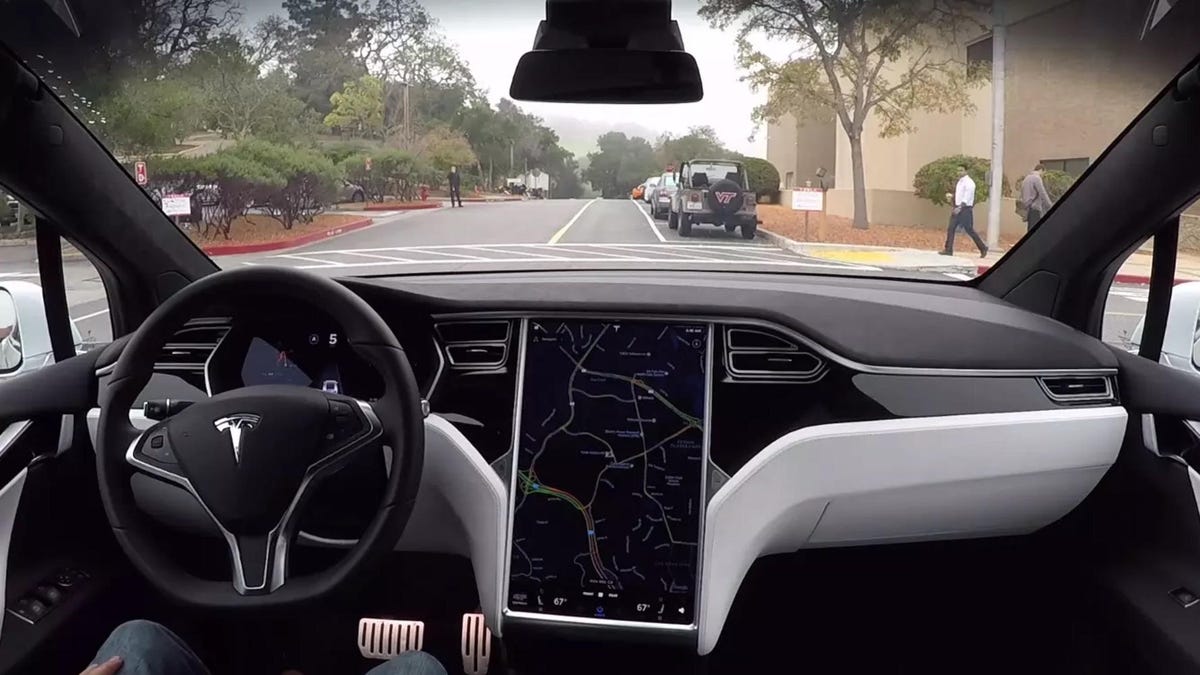
Out of 392 crashes in the last year involving cars equipped with advanced driver assistance systems (ADAS), 273 involved Teslas, according to a new government report. The data, released by the National Highway Traffic Safety Administration, gives the public the clearest picture yet of the risks associated with the driver-assistance tech that is being integrated into cars.
The NHTSA stressed in its report that the data is incomplete and — for a number of reasons — can’t be used to compare automakers to one another. However, that didn’t stop lawmakers from coming down hard on Tesla, particularly for the branding of its “Autopilot” technology.
ZDNet Recommends
“We are seeing a never-ending parade of reports about Autopilot operating in ways that skirt our safety laws and endanger the public, from rolling through stop signs and phantom breaking,” Senator Ed Markey, D-Mass., said Wednesday after the report was released. “Tesla has argued Autopilot makes us safer, but this report provides further evidence slamming the breaks on those claims.”
Tesla did not immediately respond to a request for comment.
Markey said he and Senator Richard Blumenthal, D-Conn., are sending a letter to the NHTSA “demanding the agency take swift action to ensure Autopilot and other [ADAS] programs no longer pose a danger to the public.”
The NHTSA, Markey continued, “has an obligation to work urgently to fill gaps in its data and use this information for aggressive and effective enforcement of regulations.”
For the past year, automakers and operators have been required to report to the NHTSA any crashes involving vehicles with automated systems deployed at least 30 seconds before the crash occurred. The collection of this data is just the first step in gaining a better understanding of how automated systems are working.
The data isn’t entirely comprehensive for a number of reasons. To begin with, some vehicles are equipped with telematics capabilities, making it easier to report when a vehicle with automated systems is in a crash. Beyond telematics, manufacturers and operators largely rely on consumer complaints to begin collecting data.
Meanwhile, the data is not normalized by the number of vehicles a manufacturer or developer has deployed or by vehicle miles traveled. That information is held by manufacturers and not currently reported to NHTSA.
“Thus, these data cannot be used to compare the safety of manufacturers against one another,” the agency noted.
Electric Vehicles
At the same time, driver-assistance features are increasingly common. The NHTSA collected data related to Level 2 (L2) ADAS, which include driving support features like lane centering assistance and adaptive cruise control. Drivers using L2 ADAS “must remain engaged and alert at all times when using these systems, as they are not designed to and are not able to perform critical operating components of the driving task,” the NHTSA notes. “These vehicles include driving support features, not automated driving features.”
The NHTSA also collected data related to Levels 3-5 automated driving systems (ADS), which are able to perform the complete driving task in limited circumstances. They’re not currently sold to consumers, but they are in limited use on public roads around the country. Companies like Waymo and Zoox, as well as traditional automakers like GM and Ford, are testing these systems as they experiment with using automation for functions like ride hailing, shuttle services, and delivering goods.
Of the 130 crashes involving Levels 3-5 ADS-equipped vehicles, 62 involved Waymo vehicles. Since reporting requirements began, one crash reported for an ADS-equipped vehicle resulted in serious injuries, and 108 of the crashes resulted in no injuries. Of the 130 reported crashes, 108 involved collisions with another vehicle and 11 involved a vulnerable road user, such as a pedestrian or cyclist.
For vehicles with L2 ADAS, the data show that alleged serious injuries or a fatality occurred in 11 of the 98 crashes where information on injuries was reported. Of the total reported crashes for L2 ADAS, at least 116 of the collisions were with another vehicle and at least four involved a vulnerable road user.
Going forward, NHTSA will release data updates monthly.



















